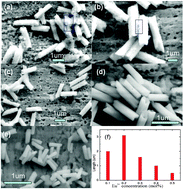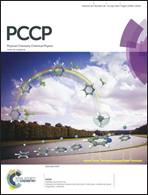Controlled synthesis, photoluminescence, and the quantum cutting mechanism of Eu3+ doped NaYbF4 nanotubes
Abstract
Quantum cutting down-conversion has been the subject of intense research activity due to its wide application in optoelectronic devices. However, the energy transfer mechanism behind this down-conversion process is not fully understood. In this work, monodispersed Eu3+ doped NaYbF4 nanotubes were synthesized by a hydrothermal route. Simultaneous phase transition from cubic to hexagonal and size modification are controlled by changing the Eu3+ doping concentration. Excited by 393 nm ultraviolet monochromatic light, Eu3+ doped NaYbF4 nanotubes show quantum cutting down-conversion involving visible and broadband near-infrared emissions through an energy migration process 5D2 (Eu3+) → 2F5/2 (Yb3+) + 2F5/2 (Yb3+). Based on the emission spectra of Eu3+ ions, an improved method is proposed to calculate Judd–Ofelt intensity parameters and radiative transition probability. A comprehensive seven-level rate-equation model is developed to study the energy transfer mechanism. This work offers a method to calculate Judd–Ofelt parameters of opaque powder phosphors and to evaluate the population dynamics of excited states.


 Please wait while we load your content...
Please wait while we load your content...